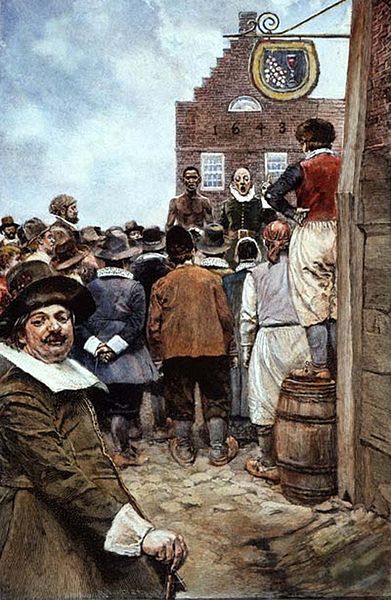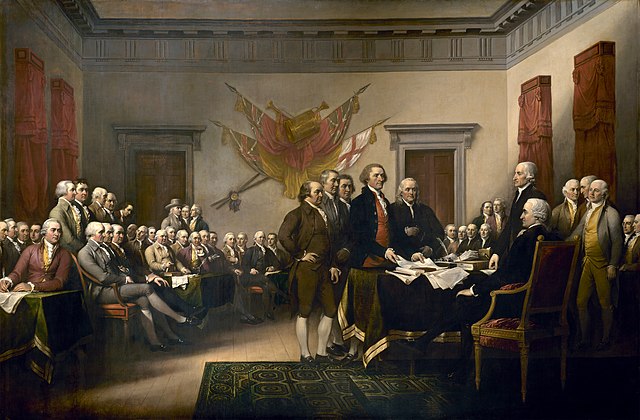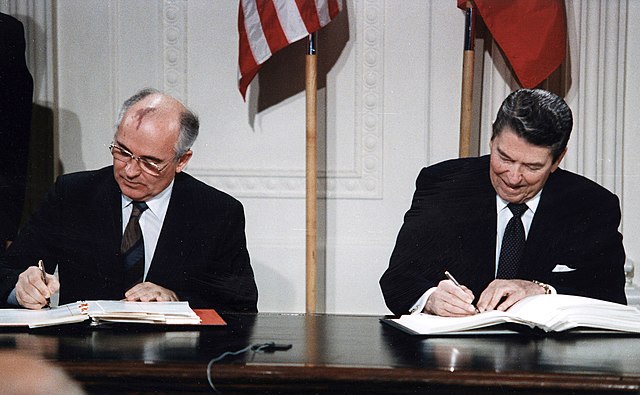Slavery in the colonial history of the United States
Slavery in the colonial history of the United States refers to the institution of slavery as it existed in the European colonies which eventually became part of the United States. Slavery developed due to a combination of factors, primarily the labour demands for establishing and maintaining European colonies, which had resulted in the Atlantic slave trade. Slavery existed in every European colony in the Americas during the early modern period, and both Africans and indigenous peoples were victims of enslavement by European colonizers during the era.
The Pequot War resulted in the enslavement of numerous Pequots by New England colonists and their indigenous allies.
Many Native Americans were enslaved during the California Genocide by American settlers.
A frontispiece of the Code Noir, from the 1742 edition.
The First Slave Auction at New Amsterdam in 1655, an illustration by Howard Pyle
The United States of America, commonly known as the United States or America, is a country primarily located in North America. It is a federation of 50 states, a federal capital district, and 326 Indian reservations. Outside the union of states, it asserts sovereignty over five major unincorporated island territories and various uninhabited islands. The country has the world's third-largest land area, second-largest exclusive economic zone, and third-largest population, exceeding 334 million.
Cliff Palace, built by Ancestral Puebloans in present-day Montezuma County, Colorado, between c. 1200 and 1275
Declaration of Independence, a portrait by John Trumbull depicting the Committee of Five presenting the draft of the Declaration to the Continental Congress on June 28, 1776, in Philadelphia
Mikhail Gorbachev and Ronald Reagan sign the Intermediate-Range Nuclear Forces Treaty at the White House in 1987.
The Twin Towers in New York City during the September 11 attacks of 2001








